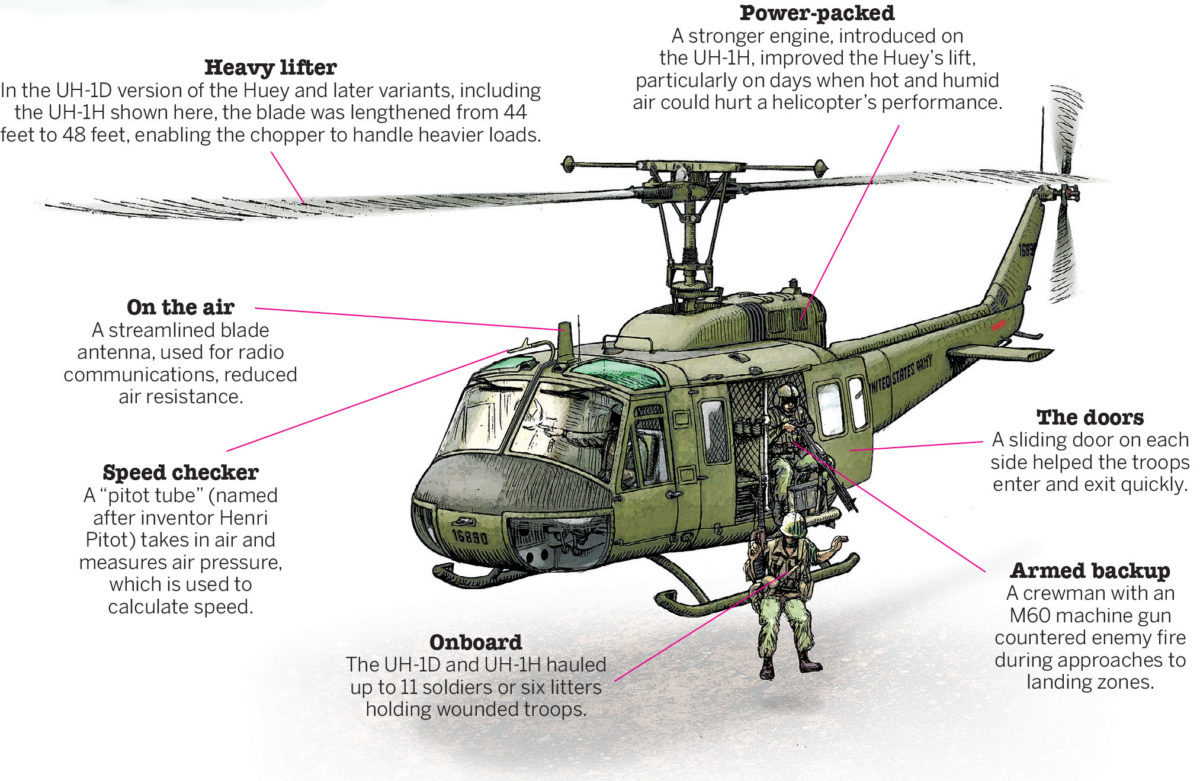At 10:48 a.m. on Nov. 14, 1965, UH-1B helicopters delivered the lead units of the 1st Battalion, 7th Cavalry Regiment, 1st Cavalry Division (Airmobile), to Landing Zone X-Ray in South Vietnam’s Ia Drang Valley. North Vietnam’s 33rd Regiment attacked, triggering the first major battle between the U.S. and North Vietnamese armies, immortalized in the book We Were Soldiers Once…and Young and its film adaptation.
Media coverage of the battle featured images of what became the war’s iconic American weapons, the M16 rifle and the UH-1 “Huey” helicopter, commonly called a “slick” because no guns were mounted on its sides, giving the chopper a smooth, slick surface. The Huey was at every major battle, making Vietnam “the helicopter war.”
When the aircraft, made by Bell Helicopter Co., entered production in 1959, it was officially the HU-1 Iroquois, but troops began calling it “Huey,” a play on the HU designation. The designation was changed to UH-1 in 1962, but the nickname stuck.
The Army had intended to use Hueys as medevac helicopters. By 1963, however, the emerging air mobility doctrine gave them an expanded mission, including troop lifts to combat zones. When the newly activated 1st Cavalry Division (Airmobile) entered Vietnam in late summer 1965, it possessed 435 helicopters, mostly UH-1s.
The Huey was to Vietnam what the jeep was to World War II. All five major armed services employed them. Hueys flew missions that included troop movements, cargo transport, signals intelligence, psychological warfare, reconnaissance, electronic warfare, command and control, search and rescue—and, of course, medical evacuation. They evacuated more than 120,000 casualties, saving thousands of lives.
By war’s end, more than 8,000 Hueys had been built, with over 1,000 outfitted as gunships, and 7,013 served in Vietnam, where 2,820 were lost. The final single-engine variant was the UH-1H, which was introduced in 1967 and became the most produced model. The last version to see combat in Vietnam, the twin-engine UH-1N, entered production in 1970.
Hueys served the U.S. and its allies well into the 21st century, but they will be remembered most for their starring role in the skies over Vietnam.
Crew: 4
Engine: 1,400 shaft horsepower Avco Lycoming T53-L-13 gas turbine
Rotor diameter: 48 feet
Fuselage length: 41 feet
Load: 8-11 troops (excluding crew) or six stretchers; 4,000 pounds in a sling
Maximum speed: 141 mph
Cruising speed: 126 mph
Range: 236 miles
Armament: One or two door-mounted M60 machine guns





